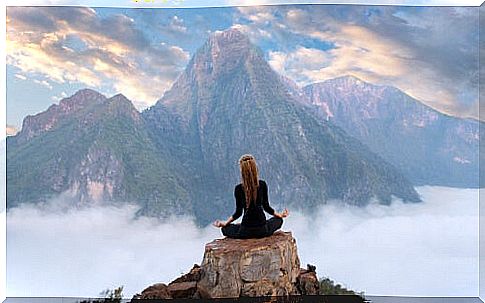The Best Techniques To Calm Anxiety

The techniques to calm anxiety in the day to day are a primary help. They act as prevention and coping strategies. They are, in turn, adequate supports to prevent these everyday states from becoming chronic realities. In situations where sooner or later, one ends up losing control until leading, for example, in a generalized anxiety disorder.
Advances in neuroscience help us understand this series of stressful conditions much better. Thus, studies such as those carried out by Dr. Baldwin DS and Dr. Leonard BE of the University of Cape Town, in South Africa, show us something interesting. When we experience anxiety, what is known as the “fear network” is activated in our brain.
The functional and neurochemical alterations that this emotion generates are multiple. Above all, if we are already facing more serious and above all, chronic conditions. The key to all of this is undoubtedly preventing them. None of us can avoid being immune to these processes, it is part of the human condition. However, what we can do is learn to handle them, to do our part to always have an advantage over them.
Let us therefore see a series of basic strategies with which to work adequately and effectively in this state.

3 techniques to calm anxiety
The classic phrase that if we limit ourselves to doing the same as always, we will end up obtaining the same results, has a very successful meaning here. In the first place, to face anxiety, it is useless to continue feeding the same dynamics. It is necessary that we apply first of all an adequate mentality of growth and awareness of change.
If we promote new behaviors and mental approaches, the benefits will come. If we generate positive behaviors we will see results. Now, there are cases where the person feels incapable of doing anything. In those situations where we fall into a clear defenselessness, it is necessary to ask for specialized help.
1. Toolbox for anxiety
The anxiety “toolbox” is a very suitable therapeutic tool. It is based on three strategies:
- Ask us questions. Every time we perceive that we are feeling anxiety, we will ask ourselves the following questions : what can I do to control this situation? On a scale of 1 to 10, how realistic are the thoughts I am having? Can I find a healthier and more satisfactory solution to deal with this?
- Taking action In these cases, by taking action we refer to simple strategies that have always served us in other situations to reduce anxiety. As an example we have dynamics such as going for a walk, meditating, listening to music, exercising, calling a friend, writing, listening to music …
- Control physical responses . All coping with anxiety must include a “tool” to channel physical responses. Thus, progressive relaxation exercises or deep breathing can help us.

2. Recognize some negative thought patterns
Another of the best techniques to calm anxiety is to recognize “patterns. ” All of us, when we experience this psychological reality, always follow the same pattern, one guided by a series of negative thoughts that often repeat themselves.
Thus, terms such as I am not going to be able / I should / I should / everything is going to go wrong … They are undoubtedly ways of falling into real mental prisons. We must become aware of these mental dynamics. We must identify the pattern of fear and those negative thoughts that corner us in real prisons.
3. Your hold button
Stop the world. Hit the pause button and let everything continue at its own pace while you drink yours. Thus, another key tool of these techniques to calm anxiety is undoubtedly to slow down, dedicate quality time to where to be, to be and to breathe deeply. In this way, practices such as Mindfulness for example, can be very useful to us.
The goal of all this is simple: get in touch with you and your needs and, most importantly, take care of yourself. This implies not only slowing down. It means eating better, cultivating ourselves, finding our own spaces where we can be with ourselves… Remember that we are, in essence, valuable beings who deserve to feel better.

Let’s take note of these simple techniques to calm anxiety and put them into practice today. The results are noticeable.









